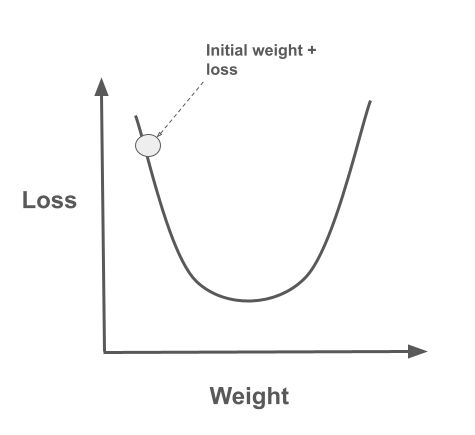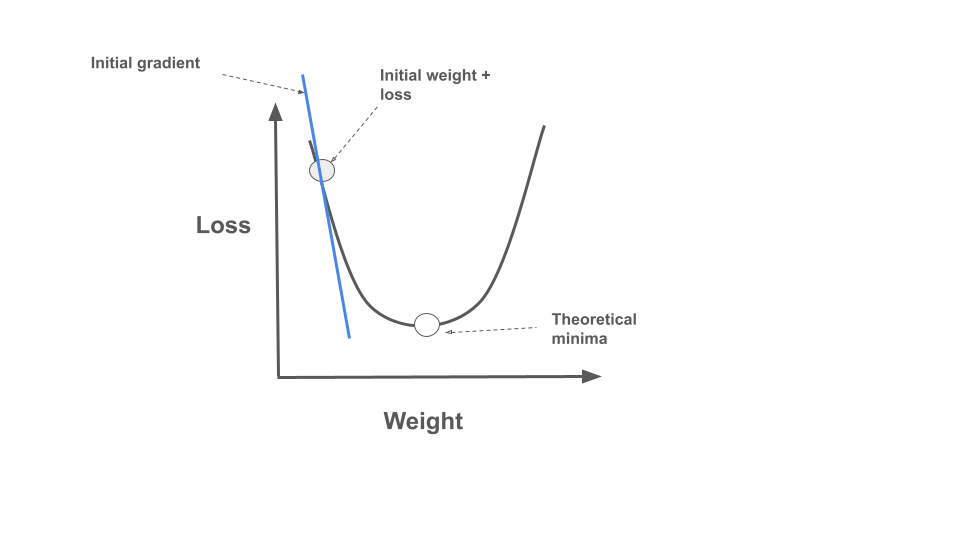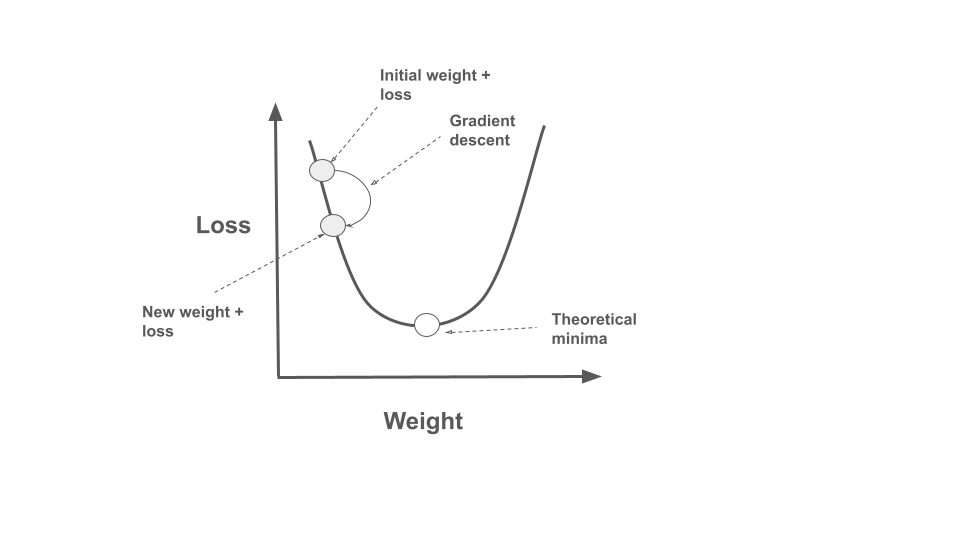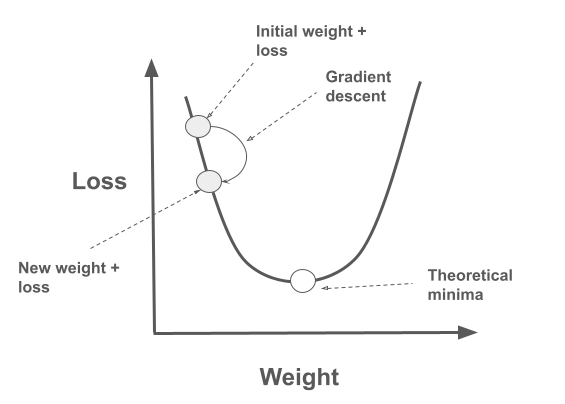flowchart LR
%% Input Layer
I1((I1)):::inputStyle
I2((I2)):::inputStyle
I3((I3)):::inputStyle
B1((Bias)):::biasStyle
%% Hidden Layer
H1((H1)):::hiddenStyle
H2((H2)):::hiddenStyle
H3((H3)):::hiddenStyle
B2((Bias)):::biasStyle
%% Output Layer
O1((O1)):::outputStyle
O2((O2)):::outputStyle
%% Connections
I1 -->|w11| H1
I1 -->|w12| H2
I1 -->|w13| H3
I2 -->|w21| H1
I2 -->|w22| H2
I2 -->|w23| H3
I3 -->|w31| H1
I3 -->|w32| H2
I3 -->|w33| H3
B1 -->|b1| H1
B1 -->|b2| H2
B1 -->|b3| H3
H1 -->|v11| O1
H1 -->|v12| O2
H2 -->|v21| O1
H2 -->|v22| O2
H3 -->|v31| O1
H3 -->|v32| O2
B2 -->|b4| O1
B2 -->|b5| O2
%% Styles
classDef inputStyle fill:#3498db,stroke:#333,stroke-width:2px;
classDef hiddenStyle fill:#e74c3c,stroke:#333,stroke-width:2px;
classDef outputStyle fill:#2ecc71,stroke:#333,stroke-width:2px;
classDef biasStyle fill:#f39c12,stroke:#333,stroke-width:2px;
%% Layer Labels
I2 -.- InputLabel[Input Layer]
H2 -.- HiddenLabel[Hidden Layer]
O1 -.- OutputLabel[Output Layer]
style InputLabel fill:none,stroke:none
style HiddenLabel fill:none,stroke:none
style OutputLabel fill:none,stroke:none
Week 03
Basics of Neural Networks (Part 2)
LLMs in Lingustic Research WiSe 2024/25
Akhilesh Kakolu Ramarao
23 Oct 2024
Activation functions
- Activation functions are used to introduce non-linearity to the output of a neuron.
Sigmoid function \[ f(x) = \frac{1}{1 + e^{-x}} \]
Example: \(f(0) = 0.5\)
where:
- f(x): This represents the output of the sigmoid function for a given input x.
- e: This is the euler's number (approximately 2.71828).
- x: This is the input to the sigmoid function.
- 1: This is added to the denominator to avoid division by zero.- The sigmoid function takes any real number as input and outputs a value between 0 and 1.
- It is used in the output layer of a binary classification problem.
ReLU function
\[ f(x) = \max(0, x) \]
Example: \(f(2) = 2\)
where:
- f(x): This represents the output of the ReLU function for a given input x.
- x: This is the input to the ReLU function.
- max: This function returns the maximum of the two values.
- 0: This is the threshold value.- The Rectified Linear Unit (ReLU) function is that outputs the input directly if it is positive, otherwise, it outputs zero.
- The output of the ReLU function is between 0 and infinity.
- It is a popular activation function used in deep learning models.
Loss functions
- During forward pass, the neural network makes predictions based on input data.
- The loss function compares these predictions to the true values and calculates a loss score.
- The loss score is a measure of how well the network is performing.
- The goal of training is to minimize the loss function.
- You can use different loss functions for different set of tasks:
- For regression problems, use MSE or MAE.
- For classification problems, use cross-entropy loss.
- For multi-class classification problems, use categorical cross-entropy loss.
Gradient descent
- Gradient descent is a optimization algorithm used in machine learning to minimize the loss function of a model.
- The algorithm works by iteratively adjusting the model parameters (weights and biases) to reduce the loss.
- The key idea behind gradient descent is to move in the direction of the negative gradient of the loss function.
- A negative gradient indicates the direction of steepest descent, i.e., the direction in which the loss decreases the fastest.
- By following the gradient, the algorithm can find the optimal values of the model parameters that minimize the loss function.

- X-axis (Weight): Represents the value of the model parameter being optimized.
- Y-axis (Loss): Represents the value of the loss function being minimized.
- The goal is to find the value of the model parameter that minimizes the loss function.

- The process starts at an initial weight with a corresponding loss, marked as “Initial weight + loss” on the graph
- Gradient: The algorithm calculates the gradient (slope) at the current position. This gradient indicates the direction of steepest ascent.

- The model then takes a step in the opposite direction of the gradient, as we want to minimize the loss.
- This is why it’s called gradient descent - we descend along the gradient.
- The “New weight + loss” point on the graph shows an intermediate step in this process, where the loss has decreased compared to the initial position.

- As the algorithm progresses, it should ideally approach the bottom of the curve, labeled as “Theoretical minima” in the image.
- The algorithm may not always reach the exact theoretical minima due to factors like step size (learning rate) and the complexity of the loss landscape.
- But, it typically converges to a point close enough to be practically useful for model optimization.
Learning rate
- The learning rate is a hyperparameter that controls how much the model parameters are adjusted during training.
- A hyperparameter is a parameter whose value is set before the learning process begins.
- Learning rate is a critical parameter that can affect the convergence of the optimization algorithm.
- A high learning rate can cause the model to overshoot the minima, leading to instability and divergence.
- A low learning rate can slow down the training process and may get stuck in local minima.
Single-layer Neural Network
- A neural network is a collection of interconnected nodes (neurons) that process input data to produce output predictions.
- The nodes are organized into layers, with each layer performing specific computations.
- The input layer receives the input data, the hidden layers process the data, and the output layer produces the final predictions.
- The connections between nodes are represented by weights, which are adjusted during training to optimize the model.
- The input layer consists of three nodes (I1, I2, I3) representing the input features.
- The hidden layer consists of three nodes (H1, H2, H3) that process the input data.
- The output layer consists of two nodes (O1, O2) that produce the final predictions.
- The connections between nodes are represented by weights (w11, w12, …, v32) and biases (b1, b2, …, b5).
- The weights and biases are adjusted during training to optimize the model.
- The model makes predictions by passing the input data through the network and computing the output.
Training, development and test datasets
- The training dataset is used to optimize the model parameters (weights and biases) using gradient descent.
- The development dataset is used to tune the hyperparameters of the model, such as the learning rate and the number of hidden units.
- The test dataset is used to evaluate the performance of the model on unseen data.
- In order to avoid overfitting, it is important to have separate datasets for training, development, and testing.
- The training dataset is typically the largest, followed by the development and test datasets.
- The development and test datasets should be representative of the data the model will encounter in the real world.
- The datasets should be randomly sampled to avoid bias and ensure that the model generalizes well.
Thank you!
![]()
LLMs in Lingustic Research WiSe 2024/25